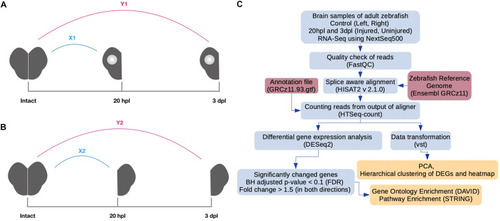FIGURE 1
- ID
- ZDB-FIG-201121-121
- Publication
- Demirci et al., 2020 - Comparative Transcriptome Analysis of the Regenerating Zebrafish Telencephalon Unravels a Resource With Key Pathways During Two Early Stages and Activation of Wnt/β-Catenin Signaling at the Early Wound Healing Stage
- Other Figures
- All Figure Page
- Back to All Figure Page
|
Pipeline for RNA preparation and analysis of RNA sequencing (RNA-seq) data. |

